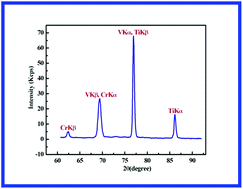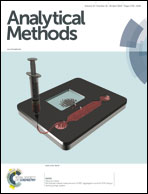Determination of chromium and titanium contents in V–Cr–Ti alloys using X-ray fluorescence spectrometry with solution and fusion techniques
Abstract
V–Cr–Ti ternary alloys are important structural materials for fusion reactors, and quantification of chromium and titanium is essential in view of their significant effect on various properties of these vanadium-based alloys. Here, an X-ray fluorescence (XRF) method for analyzing (3–10)% chromium and (3–10)% titanium in a V–Cr–Ti ternary alloy has been established. The sample was prepared using two methods, namely solution and borate fusion methods. For the solution technique, the alloy sample was dissolved in a mixture of nitric acid and hydrofluoric acid, and Fe was added as an internal standard to improve precision. For the borate fusion technique, the alloy sample was dissolved in a mixture of nitric acid and hydrofluoric acid in a Pt–Au crucible, evaporated to dryness, and fused with flux to form a glass disk. Linear calibration curves were obtained by measuring synthetic standards prepared using the solution and borate fusion techniques. The results obtained were in good agreement with those given by inductively coupled plasma optical emission spectrometry (ICP-OES) and the relative standard derivation (RSD) was less than 1.0%.



 Please wait while we load your content...
Please wait while we load your content...